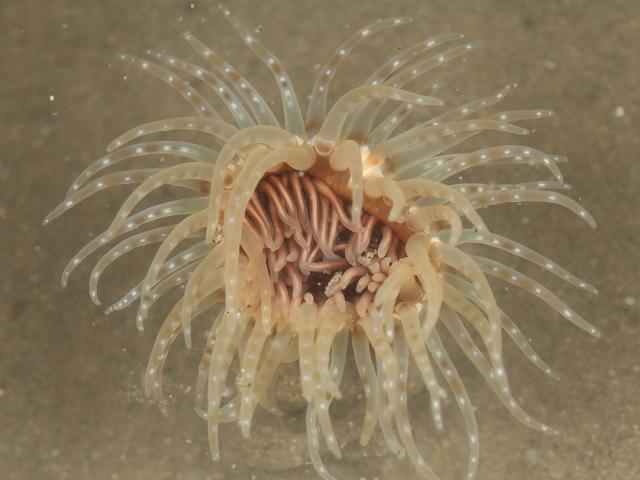
APHOTOMARINE
An educational resource dedicated mainly to the photography
and diversity of marine life that can be found in coastal waters
and intertidal areas of Great Britain and Ireland by David Fenwick.

Cerianthidae - A Tube anemone (probably previously recorded as Cerianthus lloydii)
Scroll down and rollover titles to change screen image or click on title to view image.
Tube anemone
Cerianthidae
- oral view 1
Cerianthidae
- oral view 1
Tube anemone
Cerianthidae
- oral view 2
Tube anemone
Cerianthidae
- oral view 3
Tube anemone
Cerianthidae
- lateral view 1
Tube anemone
Cerianthidae
- oral view 4
Tube anemone
Cerianthidae
- exterior set tentacles 1
Tube anemone
Cerianthidae
- exterior tentacle bases 1
Tube anemone
Cerianthidae
- anterior lateral view 1
Tube anemone
Cerianthidae
- posterior lateral view 1
Tube anemone
Cerianthidae
- two specimens out of tube 1
Tube anemone
Cerianthidae
- column detail 1
Tube anemone
Cerianthidae
- felt tube / extreme low tide 1
Tube anemone
Cerianthidae
- habitat 1
Specimen found within its felt like tube, at low water mark on the lowest tide of the year, in sand at the head of Albert Pier, Penzance Harbour, Penzance, Cornwall. 21.02.15.
The find of the specimen is unusual in that it has been found on the shore, normally tube anemones are found in deeper water. It was only because the low tide was the lowest for many years that the species was found. It was seen, not as an anemone, but as felt-like tubes, which could very easily be confused as worm tubes. Species was found with another sand dwelling anemone, the Clock face anemone, Peachia cylindrica.
Tube anemone
Cerianthidae
- larva Cerianthus lloydii 1
Tube anemone
Cerianthidae
- larva Cerianthus lloydii 2
Tube anemone
Cerianthidae
- larvae Cerianthus lloydii 1
Tube anemone
Cerianthidae
- larvae Cerianthus lloydii 2
The larvae above, which were 1-2mm in size were found in a large middleshore pool at Battery Rocks, Penzance, Cornwall. 30.04.16. Specimens were caught using a small plankton net on a 3m pole.
Thanks to Marco Faasse for identifying the type of larvae.
This species would a few years ago, probably be regarded as the species Cerianthus lloydii. However, it has been found that the cerianthidae is more complex than thought, so individuals can only be identified to family from images, dissection and or molecular analysis is currently recommended. Research is on going.

The main objective of this website is in furthering environmental awareness and education through the medium of photography. To increase awareness and access to the wildlife of the region and help
people find and identify it. Sometimes the difference between species is obvious but many species can only be determined by observing microscopic characteristics that are specific to any one species.